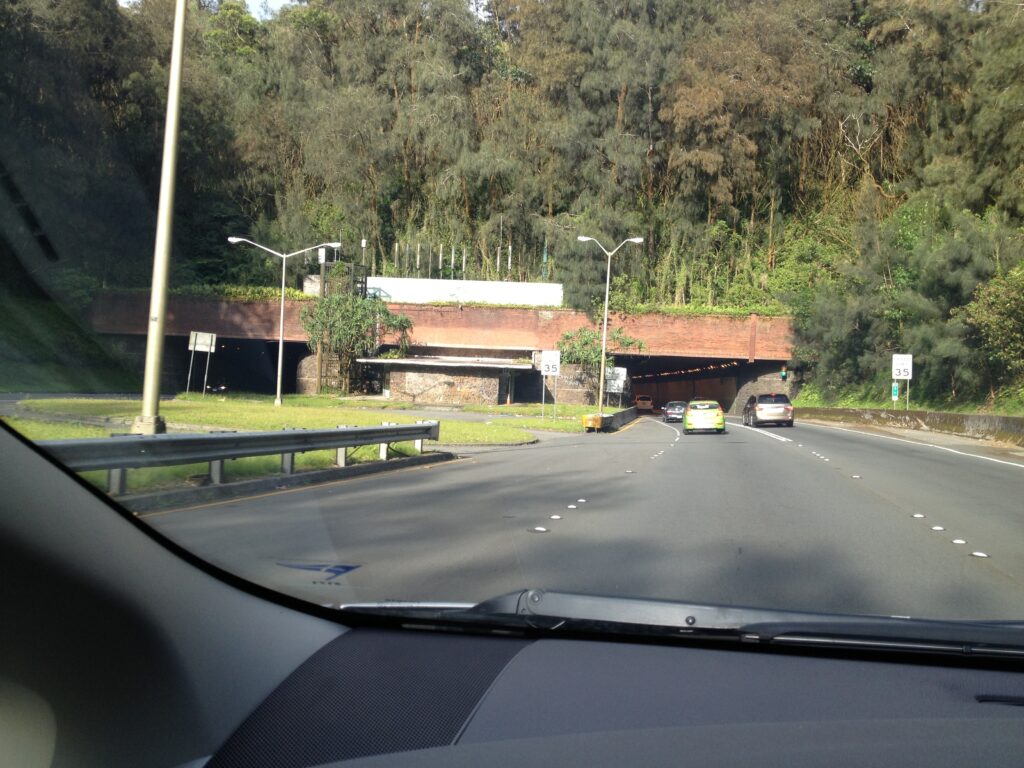Robert Louis Stevenson suggested, “Cannibalism is traced from end to end of the Pacific, from the Marquesas to New Guinea, from New Zealand to Hawaii” (although he does state “Hawaiʻi is the most doubtful” and notes only a possible single circumstance.)
Beckwith, in forceful language, noted, “there is no proof that cannibalism was ever practised in the Hawaiian group.” In addition, the story of Oʻahunui, by Mrs. EM Nakuina, which appeared in Thrum’s Hawaiian Folk Tales, attributes the introduction of cannibalism to a foreign source (“chiefs from the South Seas”) and recounts the rejection of the practice.
A few miles mauka of Kūkaniloko, to the east of Helemano, is Oʻahunui (“Great O’ahu,”) another historical place. This was the residence of the kings of the island.
When the Lo ʻAi-kanaka (“The people-eaters,”) as the last of the cannibal chiefs were called, were forced to take up residence in upper Helemano, a district just outside of the boundaries of those reserved for the royal and priestly residence, a young man called Oʻahunui was king.
They had been driven from Mokuleʻia and Waialua by the inhabitants of those districts; for the people had been exasperated by the frequent requisitions on the kamaʻāina (original inhabitants) by the stranger chiefs to furnish material for their cannibal feasts.
Oʻahunui was captivated by the suave manners of the ingratiating southern chief and his immediate retainers, and he invited them to a feast. The southern chief returned this civility, and the King dined with the strangers. Here it was strongly suspected that the dish of honor placed before the King was human flesh, served under the guise of pork.
The King found the dish very much to his liking. This went on for some time, until the unaccountable disappearance of so many people began to be connected with the frequent entertainments by the southern chief.
Oʻahunui’s subjects began to hint that their young King had acquired the taste for human flesh at these feasts, and that it was to gratify his unnatural appetite for the horrid dish that, contrary to all royal precedent, he paid his frequent visits to those who were his inferiors.
The people disapproved more and more openly of the relationship of Oʻahunui with his new friends. His chiefs and high priest became alarmed and begged him to discontinue his visits, or they would not be answerable for the consequences. The King, forced to heed their warnings, promised to keep away from the Lo ʻAi-kanaka, and did so for quite a while. Then, things changed.
Since the king had been prevented from partaking of human flesh, he had compelled his servants to kill, cook and serve up his own nephews. In satisfying his depraved appetite, he had also gotten rid of two formidable rivals; for it was quite possible that the priests and chiefs might have deposed him and proclaimed one of the two young nephews his successor.
In retaliation, the boys’ father, Lehuanui, secured a stone adze and went to the King’s sleeping-house. Lehuanui stood over Oʻahunui, adze in hand, and called him three times. Enraged Lehuanui struck at Oʻahunui’s neck with his stone adze and severed the head from the body with a single blow.
Lehuanui avenged the death of his children by killing Oʻahunui and his wife, Kilikiliʻula, who had it within her power to save her children. It is said that Oʻahunui and Kilikiliʻula, and the attendants that participated in the killing and cooking of the children, were turned into stone and are still to be seen.
Oʻahunui, located a few miles east of Kūkaniloko, was the former residence of the ruling chiefs of Oʻahu. A stone in the shape of the island of Oʻahu is said to rest there. According to Nakuina’s story, the last Aliʻi to live at Oʻahunui was named Oʻahunui.
Oʻahunui and is described as a stone “whose outline is said to resemble that of O`ahu”. The location of the Oʻahunui stone is reportedly in the gulch near the Ewa-Waialua District boundary, presumably Waikakalaua Gulch.
The stone was formerly visited by the Hawaiians, for no one could say that he had been entirely around the island of Oahu, unless he had been around this stone. (Cultural Surveys)
While most reports note the stone’s specific location is unknown, general descriptions note its approximate location. The stone, generally resembling the shape of Oʻahu, is said to be located in Waikakalaua Gulch, near the border of the ʻEwa/Waialua Moku boundaries and is within the approximate distance of other points noted by archaeologists.
The image shows what one has suggested may be the Oʻahunui Stone or one of the stones near it (Yee.) (The indicated location is according to the general description noted above – however, I am not sure if this is the Oʻahunui stone.)
(This summary is from the story by Emma M Nakuina, that first appeared in Thrum’s Hawaiian Annual in 1897 (noted in hawaii-edu)) (The photos are not to suggest they are of the Oahunui Stone; a suspicion by others.)
















































